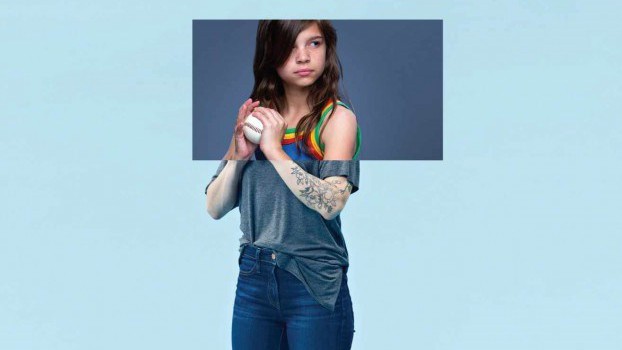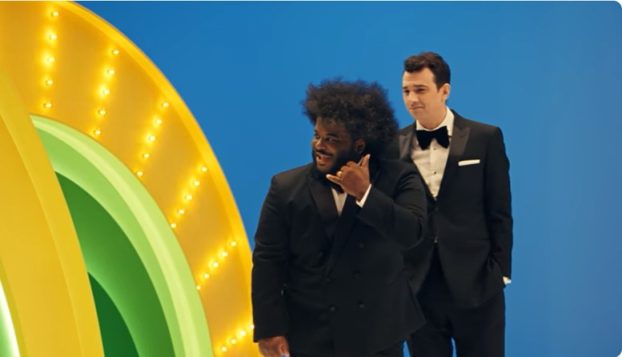Back in the top six as a finalist again this year, Ogilvy won the judges over with work for new client Cogeco and perennial favourites Hellmann’s, Dove and Shreddies. The latter resonated with Cannes judges this year as well, earning the 142-person-strong agency a Bronze Film Lion.
CASES:
Cisco Systems Canada goes green
While Cisco’s ‘Human Network Effect’ umbrella marketing message had reached enterprises, the co still needed to build credibility among small and medium businesses and consumers.
Ogilvy enlisted the target to come together to tackle a common goal – environmental change – using Cisco technology. The goal of ‘One Million Acts of Green’ was to prove that many small acts, done together, could create meaningful change for the planet and humanize the brand along the way.
Canadians registered their acts of green at Onemillionactsofgreen.com/Unmilliondegestesverts.com. Users could measure the impact of changing light bulbs or washing laundry in cold water via an emissions calculator, plus share videos, profiles, photos and blogs.

The CBC jumped on board as a media partner. On The Hour with George Stroumboulopoulos George asked his celebrity guests – from Sir Richard Branson to Oscar the Grouch – to share their acts of green. Steve Nash did a promo on the NBA website. Eight non-profits added credibility. With its WebEx online collaboration tool, Cisco launched a series of webinars, while businesses and schools used the ‘challenge utility’ web form to engage friends and families. Home Depot and other businesses enhanced their own green programs through One Million Acts of Green. And Cisco staffers competed for green titles at launch events across North America.
In 15 weeks the campaign logged 1,740,959 acts of green – accounting for over 100 million kgs of greenhouse gases saved – and produced over 6.9 million brand engagements for Cisco. Over 8,500 people joined the Facebook community group, while media generated 161 articles and over 50 TV and radio segments.
Cogeco Data Services gives techies keys to the VIP
When Cogeco acquired Toronto Hydro Telecom, it was a small start-up with limited brand recognition. Business results were poor, as was employee morale. Prospects were unhappy with their current service, but CDS was an invisible alternative.
Ogilvy was tasked with relaunching the brand to generate awareness, convey its USP (100% owned fiber-optic network) and open doors for the sales force in the GTA.
In contrast to the giants with their take-a-number tech support and unreliable services, CDS goes to almost freakish lengths to come through. Ogilvy saw a big opportunity in telling that story to the key influencer, the unsung hero: the IT guy.
To get on the IT guy’s radar, Ogilvy programmed an exclusive launch event at the heart of a 360 plan. Benefits were projected in light onto prospects’ head offices. QR codes in trade pubs and on posters linked to detailed stories and offered exclusive membership in a virtual club. Even ads in the elevator tempted them to switch.

The top 200 prospects received invitations on engraved silver USB keys to an A-list party, complete with paparazzi, screaming fans and an appearance by Wired editor Chris Anderson. A photo op for each stunned arrival, a draw for a new Mercedes and a jazz quartet awaited. The website was re-skinned to greet them later.
Within two weeks, the brand launch investment had already paid for itself, with website unique daily visitors up 416%, inbound qualified calls up 454% and 5.2 million media impressions.
Hellmann’s thinks locally
Canadians are losing the ability to eat Canadian. But Hellmann’s Real Mayonnaise, made in Canada with real eggs and canola oil from the Prairies, could shine a light on the facts and galvanize people to ‘Eat Real, Eat Local.’ The brief: establish Hellmann’s as a committed champion of the real food movement, reinforcing its real, simple ingredients.
The emotional core of the effort was a three-minute mini-documentary that exposes the alarming truth about the amount of imported product vs. homegrown in the Canadian food system at Eatrealeatlocal.ca.

The microsite directed users to locally grown foods and encouraged dialogue between individuals and organizations. Every action pledged by the audience translated into a donation towards community food programs.
A 30-second TV spot served as a preview of the film and drove to the web. Eight editorial news pieces were created in partnership with Canwest News and broadcast nationally. A DPS wrapped the ‘Make it Tonight’ section in Canadian Living and ran in other Transcontinental magazines.
After 10 days, the YouTube video had about 50,000 hits, over 18 million consumer impressions and share of social media voice was up 48% from 17%. Industry groups voiced appreciation, and Hellmann’s U.S. has asked Ogilvy to create a similar effort for that market.
Dove wakes up 20-somethings
Dove had created affinity with younger women, but they still thought of it as ‘their mother’s brand.’
Enter ‘Go Fresh,’ Dove’s first product platform designed especially for 20-somethings. Launched globally through a print and TV campaign, Ogilvy’s challenge was to deepen the connection with this new consumer and drive trial of the new line.
Research showed that women in their 20s feel pressured to find success, love and financial independence, while trying to look beautiful at the same time.
Ogilvy’s idea was to give these women a fresh perspective. The agency developed the first interactive online romantic comedy, allowing viewers to take control of the story and discover something about themselves in the process.
‘Waking Up Hannah’ follows a 20-something protagonist through three discrete storylines on the same day. The user determines the story early on by choosing one of three Go Fresh products. The choice affects Hannah’s mood and behaviour, and the action unfolds in 19 different ways, leading to seven unique endings.
Promoted through movie trailers, TV and blogs, the film received 265,263 visits between October ’08 and January ’09. The average stay was five minutes, with dedicated users playing for up to 16 minutes. Sales exceeded targets by 48%. The new product has not only grown the Unilever business, but also the bar, body wash and AP/deo categories.
Shreddies calls in the prez
‘Diamond Shreddies’ revitalized the cereal brand, and Post’s pile of (genuine) complaint letters made for some great comedic fodder. But how to keep the sales coming?
Ogilvy’s creative idea was to bring forward the ‘president’ to present a solution that would appease people, sort of. A press release was sent to media, with a straight face. Quoting actual complaints, it drove people to Diamondshreddies.com/sneakpeek for a preview of videos and clues about the upcoming special initiative, the Combo Pack.

The pack itself encouraged Canadians to continue to vote for diamonds or squares, and was later followed by the appearance of ‘voter packs’: shoppers can still purchase a Diamonds box or Squares box, each purchase a vote for one or the other. The website put forward the real-time voting results, and featured the president’s messages to keep those votes coming.
The campaign kept momentum going for Shreddies. Sales tie to advertising activity and the appearance of novelty packs on shelves. Site traffic tripled when the president’s messages launched in September compared to August, with most views from referrals on other sites, especially Digg.com and Facebook.
Jump to:























